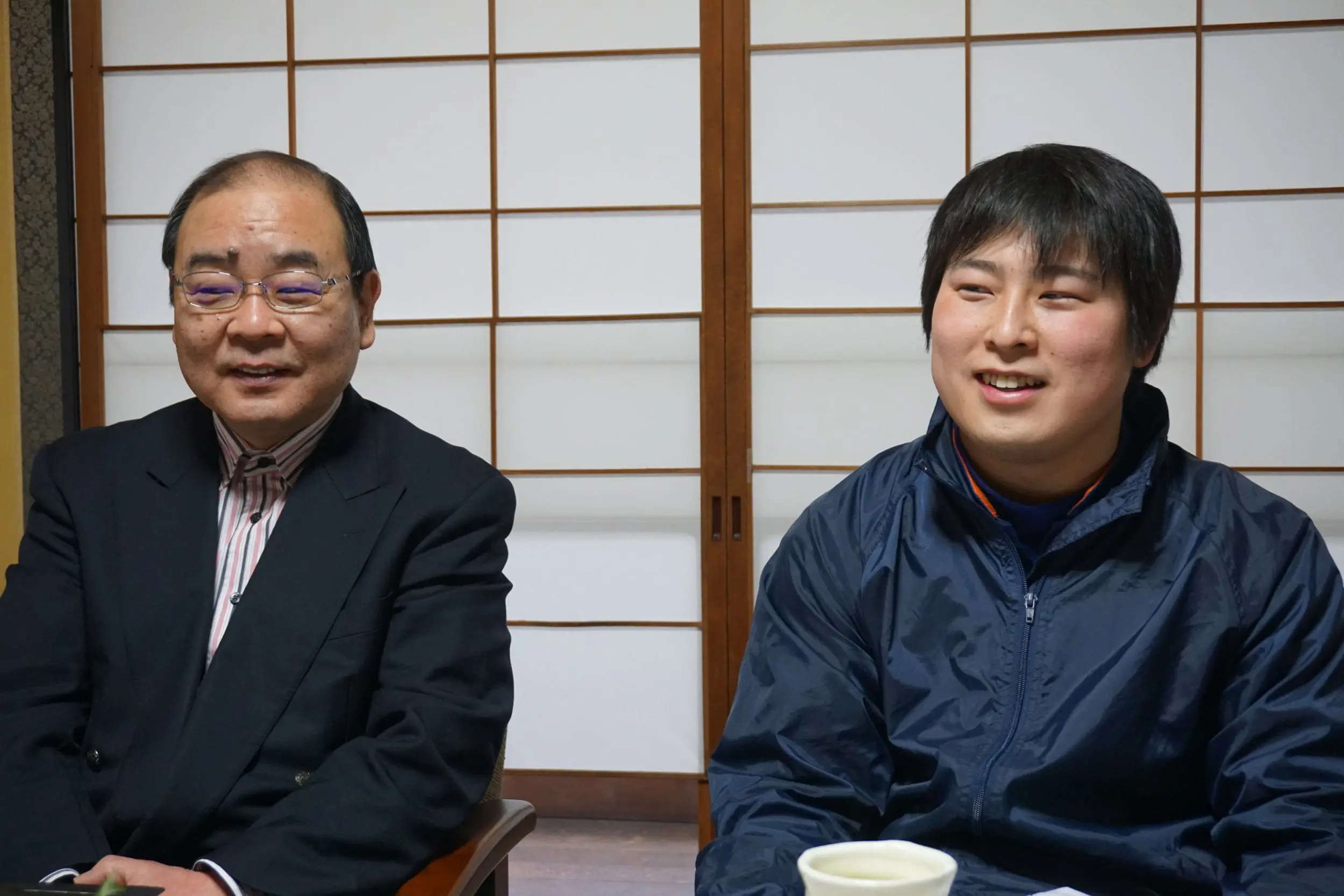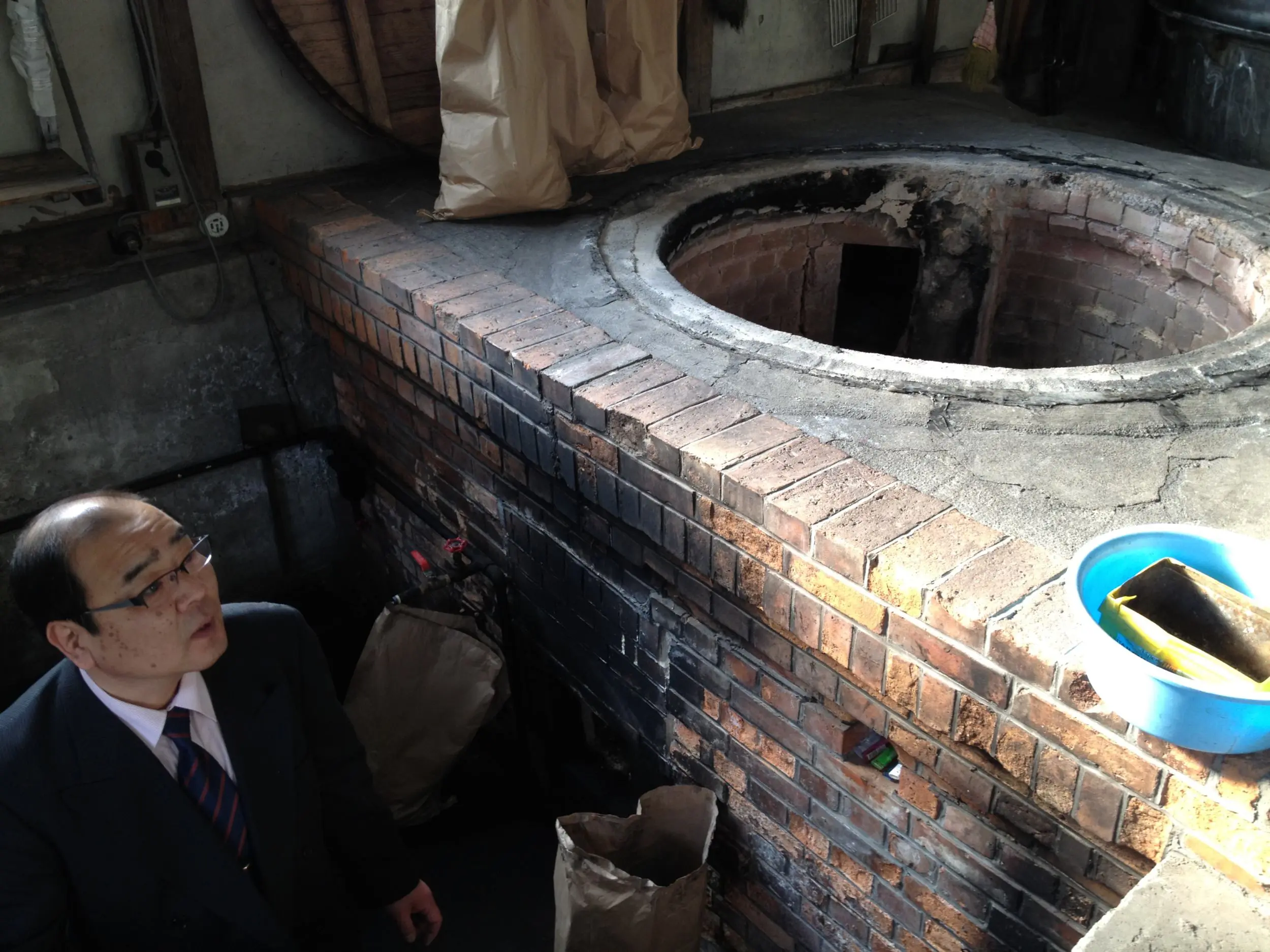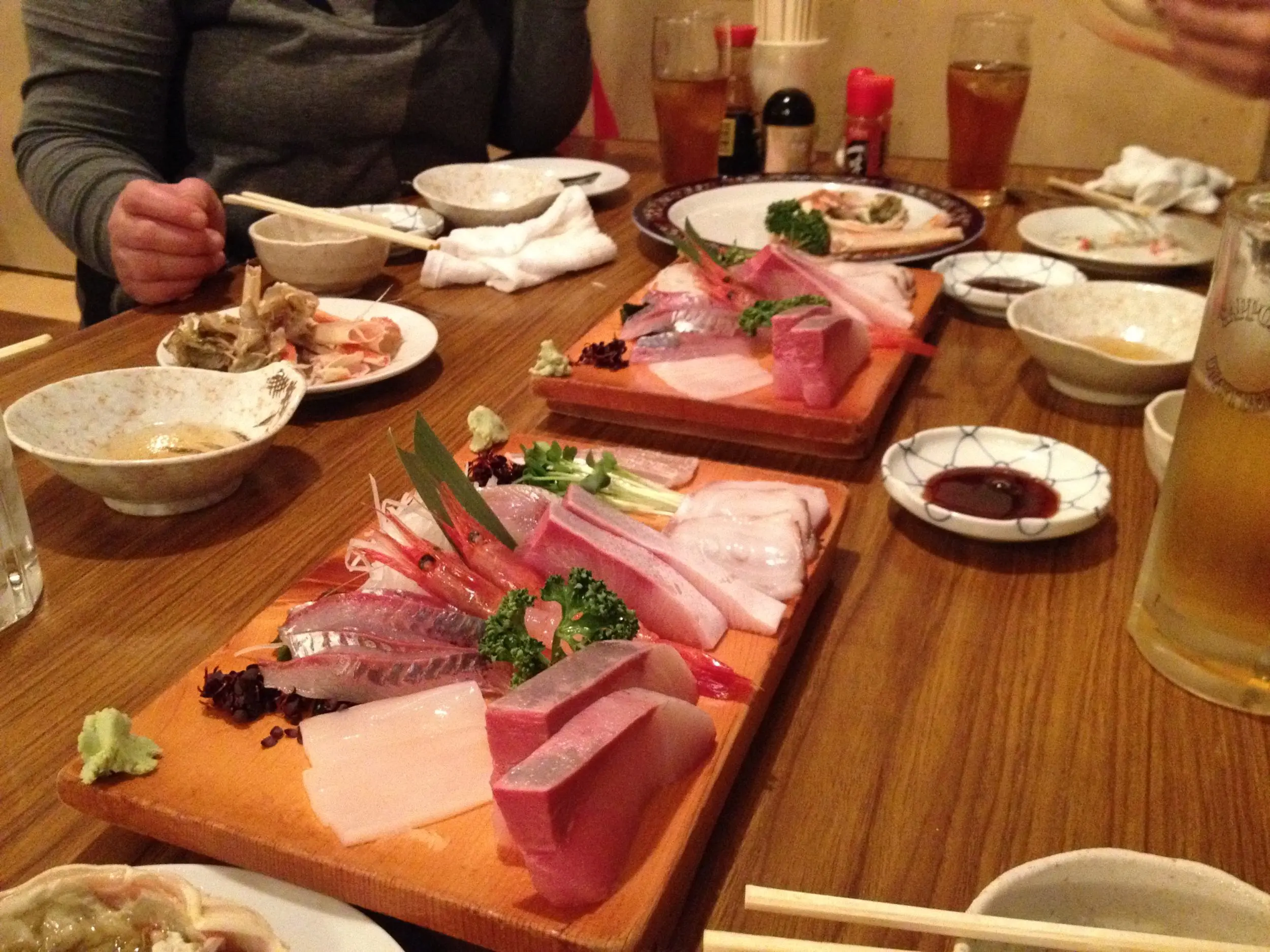
Fuku Chitose
Fuku Chitose is a modern and sophisticated spin on yamahai sake. Unlike other yamahais that shine at the junmai level, Fuku Chitose amazes across the full range from honjozo to junmai to junmai ginjo and daiginjo.
Founded in 1849, the Tajima Brewery is now managed by the 5th and 6th generations of the Tajima family. Their brand, Fuku Chitose, expresses their desires in making sake. Fuku means both “happiness” and “good fortune,” and Chitose means “forever.” In making Fuku Chitose, they want to bring consumers happiness and good fortune forever. In Japanese culture, owls, “fukuro,” symbolize wisdom and good luck. They are also located in Fukui Prefecture. Thus, there are layers of meaning, and flavor, in Fuku Chitose.

One of the first things you will feel when entering this small brewery is the close-knit, family dynamic. Tokuhiko Tajima, the 5th generation President, oversees the business, his wife and daughter-in-law manage operations, and the 6th generation son, Yujiro, makes sake as the “toji.”
The brewery’s distinguishing point is its commitment to yamahai sake. Yamahai is a traditional way of making the yeast starter, or shubo. While some breweries have revived the yamahai method at their brewery, the Tajimas never stopped. It is almost all they make. You can taste their mastery of this method.

The most traditional methods of making the shubo, or yeast starter, are bodai moto, kimoto, and yamahai. Yamahai was born out of kimoto, when sake makers learned they didn’t have to mush and mash the rice before making the yeast starter. Yamahai is short for “yama oroshi haishi,” which means to stop mushing and mashing. In yamahai, sake makers do not add lactic acid, as they do with sokujo, the modern and fast method. Instead, they let the yeast starter sit, almost always cooled, often covered, and usually isolated from the rest of the brewery. Lactic bacteria which naturally develops in the ingredients produces lactic acid bacteria, which neutralizes bacteria. However, it takes 30 days to make the shubo in yamahai, whereas it takes 7-10 days in sokujo. It is also riskier as unwanted bacteria can propagate.
Because of the time and the natural method, classic yamahais are funky, gamey, and earthy. They can easily show notes of pumpkin, peanut butter, yogurt, fresh cheese, and spice. However, sake makers like Tajima are making more modern, refined junmais and even ginjos and daiginjos of great finesse and fruit. These also show wonderful floral elements.
The Tajima Brewery is located 15 miles inland from the Sea of Japan in the Momozono area of Fukui City in Fukui Prefecture. Fukui is south of Ishikawa and Toyama: together, the three prefectures comprise the Hokuriku district which acts as a fish, sake, and food belt to the Kansai and Kanto areas.
Because of its proximity to the coast of the Sea of Japan, Fukui is famous for its fresh fish, especially enjoyed as sashimi. Fukui is also known for its seasonal crab, Echizen, which is only available in the winter.
Fukui is a prized sake-producing region that boasts many great brands. The style of Fukui sake runs from fruity, aromatic, fresh, and light, usually ginjo, to gamier, funky yamahais, which are often captured as junmais.


Fuku Chitose is a modern and sophisticated spin on yamahai sake. Unlike other yamahais that shine at the junmai level, Fuku Chitose amazes across the full range from honjozo to junmai to junmai ginjo and daiginjo.